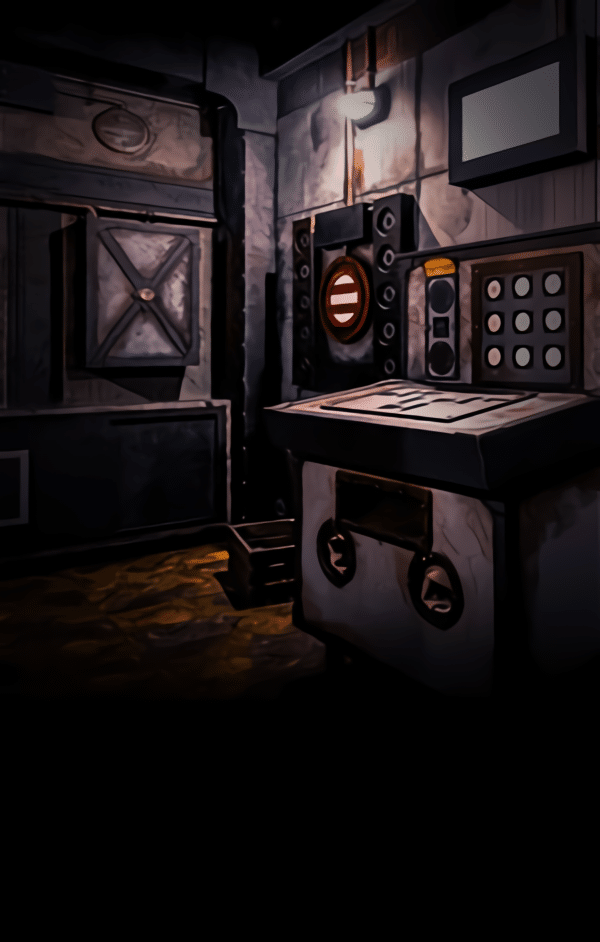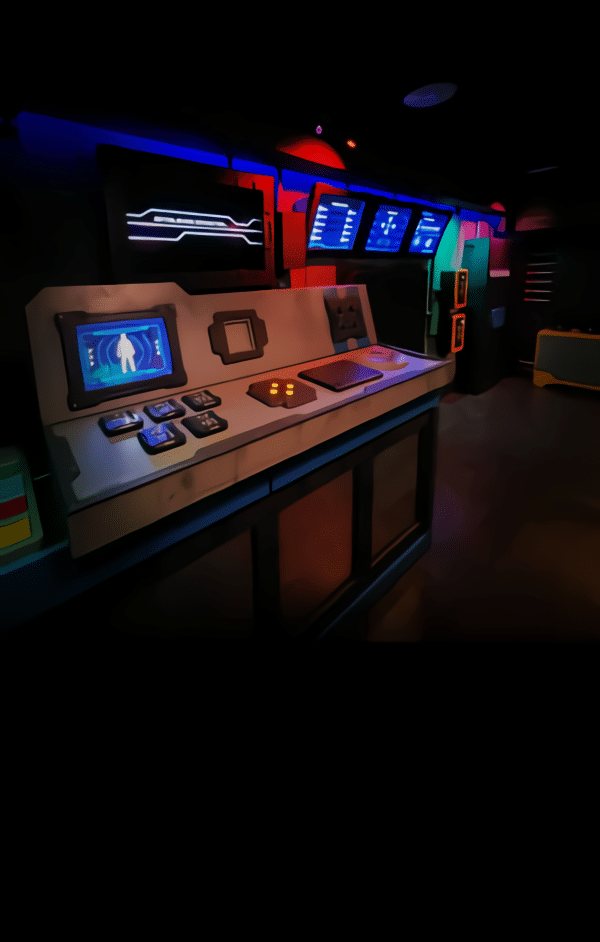Understanding the Check-In Experience for Escape Rooms NYC
Escape rooms in New York City are known for their immersive storylines, cinematic set designs, and high-energy gameplay. But one aspect players often overlook before booking is the check-in process—the essential first step that sets the tone for your adventure. Whether you’re a first-time participant or a dedicated escape room enthusiast, understanding what to expect during check-in can help ensure a smoother, more enjoyable experience.
Why Players Want to Know the Check-In Process for Escape Rooms NYC
Many people begin planning their visit by exploring options through this link — escape rooms nyc — and the moment they start comparing rooms, themes, and difficulty levels, they also want to know about logistics. From arrival instructions to safety procedures, check-in is an important part of the escape room journey. Mission Escape Games, one of the most highly rated venues in NYC, provides a seamless, efficient, and professional check-in experience designed to prepare players for their mission without stress or confusion.
This in-depth guide will walk you through the entire check-in process step-by-step, covering everything from arrival times and paperwork to safety rules, briefing sessions, and game introduction. By the end, you’ll know exactly what to expect before your escape room adventure begins.
What Is the Check-In Process Like at Escape Rooms NYC?
The check-in process at most escape rooms NYC, including Mission Escape Games, typically involves the following steps:
-
Arriving early (10–15 minutes before your session)
-
Checking in at the front desk
-
Completing waivers
-
Confirming group size and booking details
-
Storing personal belongings
-
Listening to a rules orientation
-
Receiving the storyline and mission briefing
-
Meeting your game master
-
Entering the room for your experience
Each phase is designed to prepare you for a safe, smooth, and fully immersive adventure.
Below, we break down every stage in full detail.
H2: Why Arriving Early Is Essential for Escape Rooms NYC
Escape rooms run on strict schedules. If a team arrives late, their game time must still end at the scheduled finish time.
Reasons to Arrive Early
-
Avoid losing precious minutes in the room
-
Complete paperwork without rushing
-
Allow for smooth check-in
-
Get properly briefed
-
Calm excitement and reduce stress
-
Ensure your group is fully assembled
Most venues recommend arriving 10–15 minutes early, and Mission Escape Games follows this standard.
H2: Front Desk Check-In: Your First Point of Contact
When you walk into an escape room venue, the first step is checking in at the front desk.
What Happens at the Front Desk
-
Staff greet your group warmly
-
They verify your booking
-
They confirm your room and time
-
They explain the check-in steps
-
They answer any initial questions
This is where your escape room adventure truly begins.
H2: Completing Waivers for Escape Rooms NYC
Waivers are standard in nearly all escape rooms, including Mission Escape Games. These are simple forms that ensure all players understand the rules, safety guidelines, and venue policies.
Waiver Information Typically Includes
-
Acknowledgment of safety instructions
-
Consent to participate
-
Agreement to follow rules
-
Emergency procedures
-
Media/photography consent (varies)
Waivers can be filled out digitally or on tablets provided by the venue.
H2: Why Waivers Are Required in Escape Rooms NYC
Waivers protect both you and the business.
Benefits of Waivers
-
Clarify rules to avoid confusion
-
Ensure safety awareness
-
Protect staff from liability
-
Provide written record of participant compliance
They are fast and easy to complete, usually requiring only a signature.
H2: Confirming Group Size and Booking Details
The staff will verify the total number of players in your group.
Why This Matters
-
Ensures room occupancy is correct
-
Allows staff to prepare room settings
-
Confirms payment and reservation details
-
Prevents overcapacity or undercapacity issues
Accurate headcounts ensure your group receives the best possible experience.
H2: Storing Personal Belongings Before Entering Escape Rooms NYC
Most escape rooms do not allow personal items inside the game environment.
Items Typically Stored
-
Phones
-
Bags
-
Jackets
-
Keys
-
Cameras
-
Flashlights
-
Writing tools
-
Smartwatches (case-by-case)
Lockers or storage cubbies are provided for your convenience.
H2: Why You Can’t Bring Phones Into Most Escape Rooms NYC
There are several important reasons why phones stay outside the room.
Reasons
-
Prevents cheating
-
Protects proprietary puzzle designs
-
Avoids accidental damage
-
Keeps players fully immersed
-
Preserves the surprise for future players
Mission Escape Games strictly enforces this policy to protect the experience.
H2: The Orientation: Understanding Rules and Expectations
After belongings are stored and waivers completed, staff will gather the group for a rules orientation.
Orientation Usually Covers
-
Game duration
-
Forbidden actions
-
Emergency exit instructions
-
Clue system explanations
-
What to interact with and what not to touch
-
Safety precautions
-
Equipment handling
-
The hint process
This ensures every player knows how to navigate the room safely and efficiently.
H2: Common Rules Given During Escape Room Check-In
Rules vary by venue, but some are universal.
Standard Rules
-
No force is required for any puzzle
-
Never climb on furniture or props
-
Do not remove screws or fixtures
-
Do not break locks or objects
-
Follow staff instructions
-
Listen to game master announcements
-
Do not use external tools (phones, knives, etc.)
These rules protect both the room and the players.
H2: Meeting Your Game Master
The game master plays a critical role in your experience.
Their Responsibilities Include
-
Monitoring your group
-
Offering hints when needed
-
Ensuring safety
-
Managing time
-
Resetting rooms
-
Enhancing immersion
-
Helping with questions
They are your guide to the world you’re about to enter.
H2: How Game Masters Enhance the Escape Room Experience
A great game master can elevate an already exciting adventure.
Game Master Enhancements
-
Using dramatic storytelling
-
Customizing hints for your skill level
-
Maintaining tension and pacing
-
Providing encouragement
-
Ensuring all players feel involved
They are trained to support both beginners and experts.
H2: The Storyline Briefing: Entering the World of the Adventure
Once orientation is complete, your game master will introduce the storyline for your specific mission.
Story Brief Includes
-
Background context
-
Your team’s role
-
Mission objective
-
Antagonists or challenges
-
Key clues or narrative hints
-
Starting environment description
This creates excitement and immersion before the door even closes.
H2: How Story Immersion Begins During Check-In
Immersion doesn’t start in the room—it begins before you walk inside.
Immersive Pre-Game Elements
-
Creative narration
-
Thematic atmosphere
-
Briefing rooms styled to match the experience
-
Background music
-
Visual clues or props
These elements set the mood and build anticipation.
H2: Entering the Room: The Official Start of the Experience
After the story briefing, players are guided into their escape room.
What Happens Next
-
Door closes
-
Timer begins
-
First batch of puzzles becomes visible
-
Team explores the room
-
Game master begins monitoring
-
Adventure officially starts
This transition marks the moment you step into another world.
H2: What If Your Group Arrives Late?
Escape rooms run on tight schedules.
Late Arrival Consequences
-
Reduced game time
-
Loss of immersion
-
Room may not be rescheduled
-
Group may miss orientation
-
Venue may forfeit the booking (no refund in some cases)
To avoid this, players should plan to arrive early.
H2: Large Group Check-In Procedures for Escape Rooms NYC
Large groups (8–20+ people) often require extra coordination.
What Changes for Large Groups
-
Multi-room check-in
-
Staggered orientation
-
Additional waivers
-
Coordinated timing between groups
-
Extra staff for handling
-
Competitive instructions when rooms run simultaneously
Mission Escape Games is experienced in handling large groups efficiently.
H2: Corporate and Private Event Check-In Processes
Corporate teams often receive a more structured check-in experience.
Corporate-Specific Enhancements
-
Dedicated host
-
Group briefings
-
Custom scheduling
-
Team challenges
-
Debriefing sessions after games
-
Pre- or post-event interactions
Escape rooms NYC are top choices for team-building due to coordination and problem-solving emphasis.
H2: Safety Briefing: A Critical Part of Check-In
Safety is always a priority.
Safety Instructions Include
-
Emergency protocols
-
How to use the exit
-
What to do if a player feels uncomfortable
-
Fire regulations
-
Venue-specific safety measures
These ensure a stress-free, secure experience.
H2: Accessibility Considerations During Check-In
Good venues take all players into account.
Accessibility Topics Covered
-
Physical limitations
-
Mobility needs
-
Seating options
-
Sensory considerations
-
Medical accommodations
Mission Escape Games communicates limitations clearly and respectfully.
H2: Pre-Game Questions and Clarification
Before entering the room, players can ask final questions.
Common Questions Guests Ask
-
“How many hints can we get?”
-
“Is it scary?”
-
“What should we expect?”
-
“Is it really timed?”
-
“What if we can’t solve something?”
Staff answer clearly to reduce confusion or anxiety.
H2: The Mindset Check-In: Preparing Mentally for the Challenge
Your check-in experience helps prepare your mindset.
Mental Preparation Includes
-
Trusting your team
-
Understanding the environment
-
Getting used to the timeline
-
Setting expectations
-
Preparing for teamwork
This creates a sense of unity before the adventure.
H2: Check-In Flow Efficiency at Escape Rooms NYC
The entire check-in process is designed for efficiency and professionalism.
What Makes It Smooth
-
Experienced staff
-
Clear instructions
-
Organized flow
-
Digital waiver systems
-
Clean lobby and waiting areas
-
Defined timeline
Mission Escape Games excels at keeping guests on schedule while maintaining a fun atmosphere.
Detailed Conclusion
The check-in process at escape rooms NYC is designed to ensure that every team starts their adventure fully prepared, informed, and immersed in the experience ahead. At Mission Escape Games, check-in is efficient, welcoming, and intuitive, guiding players from arrival to game start with professionalism and excitement. From signing waivers and storing personal items to listening to safety rules, meeting the game master, and receiving your mission briefing, each step builds anticipation and sets the stage for a thrilling escape room adventure.
Understanding the check-in process helps players arrive prepared, feel comfortable, and enjoy the experience smoothly from start to finish. Whether you’re a first-time player or a returning fan, Mission Escape Games provides one of the most organized and immersive check-in procedures in all of NYC—ensuring your escape journey begins on the right foot.
FAQs
1. How early should I arrive for escape rooms NYC?
Arrive 10–15 minutes early to complete waivers, store belongings, and participate in the rules orientation without rushing.
2. Do I need to fill out a waiver before the game?
Yes. All players must complete a safety and rules waiver before entering the escape room.
3. Can I bring my phone inside the escape room?
No. Phones and personal belongings must be stored in lockers to preserve game integrity and immersion.
4. What does the game master do during check-in?
The game master briefs you on story details, explains rules, monitors gameplay, and provides hints when needed.
5. What happens if my group arrives late?
Your game time may be reduced, and the booking may not be refunded. Escape rooms operate on strict schedules, so punctuality is essential.
Read: Are reservations mandatory for escape rooms NYC, or are walk-ins allowed?
Read: How do escape rooms NYC handle cancellations or schedule changes?









